There is one part of your car that’s become so desirable to organised crime gangs that reported thefts have soared by 68 per cent in the last three years.
It is one of the easiest components on your vehicle to remove, either by brute force or with a Phillips screwdriver, which makes it prime target for thieves.
And because it’s among the cheapest parts to replace, thefts often go unreported as victims of this type of crime often just spend around £15 to replace them.
But while they might appear inexpensive to drivers, to OCGs, fuel thieves and other serial motoring offenders they have become invaluable for effectively evading authorities and to allow them to continue engaging in criminal activity at arm’s length of the police.
The item in question is your car’s number plate.
According to a new report, over 5,600 drivers last year reported to the DVLA that theirs had been pinched from their vehicle. This is up from 3,370 in 2021.
And almost twice as many motorists informed the agency that they believed their registrations plate had been cloned – a rise of 41 per cent over the same three-year period.
This is because criminals are increasingly seeking out false number plates to evade ANPR (Automatic Number Plate Recognition) and CCTV cameras used to enforce our streets.
The numbers provided by the DVLA are said to be just the tip of an iceberg, given the low reported rate.
The Daily Mail has spoken to one victim of vehicle identity theft who was forced to gather her own evidence to prove her innocence a year and a half after her car’s plates were first cloned.
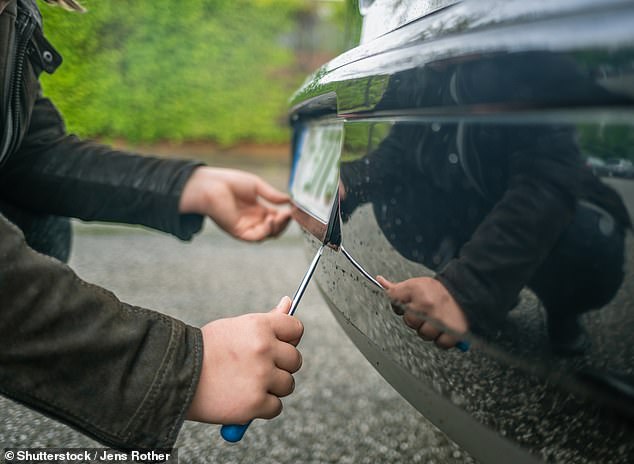
Over 5,600 drivers last year reported to the DVLA that their number plates had been pinched from their vehicle, while another 10,500 believed theirs had been cloned. But this is just the tip of an iceberg…
Motor insurer Churchill issued a freedom of information request to the DVLA regarding the volume of stolen and cloned plates reported to the agency in the last four years.
Some 5,683 drivers in 2024 told the agency their plates had been removed from their vehicles.
A further 10,461 also contacted the government department to say they believed their car’s plates had been cloned, having received penalty charges in the post or been contacted by police about offences they haven’t committed.
But these numbers are just the tip of an iceberg.
| Year | Notifications of stolen number plates | Notifications of cloned number plates |
|---|---|---|
| 2021 | 3,376 | 7,430 |
| 2022 | 4,022 | 7,837 |
| 2023 | 4,295 | 9,948 |
| 2024 | 5,683 | 10,461 |
| Source: DVLA figures supplied to Churchill | ||
This is because not all drivers notify the DVLA when they’ve had their plates taken or believe they’ve been duplicated by criminals.
The AA says that around 25,000 to 30,000 motorists per year tell the police their plates have been pinched off their cars. And these numbers are rising, according to other reports.
A Direct Line study in 2022 suggested that 53,000 people told UK police forces that their number plates had been removed from their motors the year previous.
Another reason vehicle identity theft has become so prevalent is the ease in which criminals can obtain fake plates, with online retailers often not requiring proof of vehicle ownership before shipping a new pair to a customer.
This means gangs can roam the streets to find similar vehicles to the one they’re using – ideally of the same make, model and colour – to replicate the number plate. Another common tactic is to scour used car ads, filtering by the generation of vehicle and paint colour, to find one that’s almost exactly the same, then duplicate the registration plate.
However, because number plate theft is often not reported, the volumes nicked could be far higher – and, as such, statistics are difficult to obtain and often inaccurate.
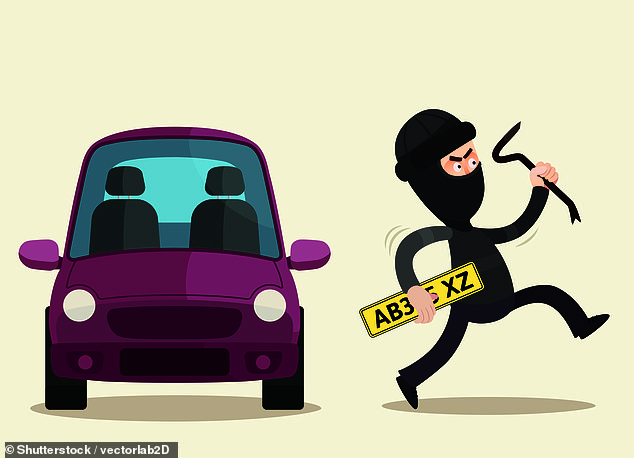
Number plate thefts and cloning often goes unreported. The AA says that around 25k-20k motorists per year have their plates pinched, and a report in 2023 said the annual theft toll could be as high as 53,000
Victims of this type of crime should always inform both the police and the DVLA not only to report the offence but also safeguard themselves in the future.
When reporting to the police, drivers are issued a crime reference number. This number will be needed to challenge any future penalty charges or offences linked to the vehicle carrying your plates or duplicated versions.
But while it is correct protocol to also notify the DVLA, not every driver does so.
Those who do contact the agency are likely seeking a replacement registration number to avoid a string of fines and speeding tickets arriving through the letterbox or knocks on the door from officers until the offenders with your plates are caught – if they are snared at all.
For this reason, the numbers quoted to Churchill are not likely giving the full picture.
Motorists who believe their plates have been pinched or cloned should also contact their insurer immediately.
Nicholas Mantel, head of Churchill Motor Insurance, said the sharp rise in number plate cloning and theft is a ‘worrying trend’ that ’causes significant stress for innocent drivers’.
He says victims will often ‘face lengthy processes to prove their innocence and challenge fines issued in their name’.
Motorists can take the security of their number plates into their own hands by fixing them with special tamper-proof screws.
These can cost as little as £2.50 from Halfords, with Mantel saying they can be an ‘effective theft deterrent’.
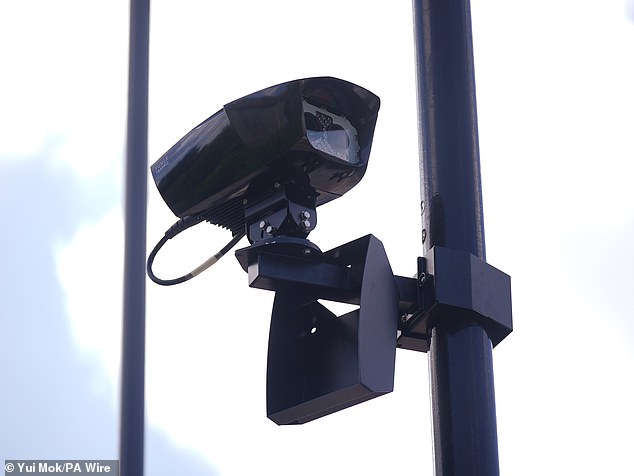
Number plate cloning is on the rise due to the increased use of ANPR cameras to surveil and enforce our roads. Repeat traffic offenders and OCGs are using stolen or cloned plates to go undetected
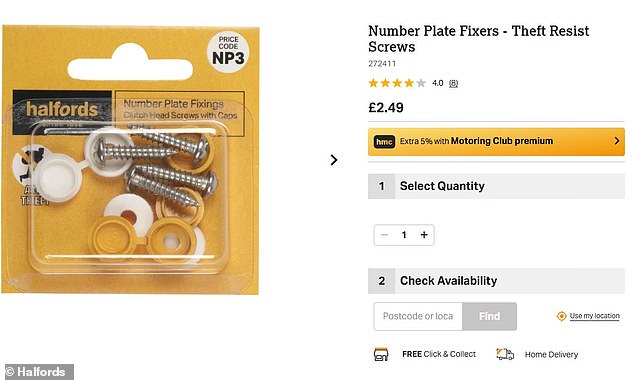
Halfords sells ‘theft resist’ screws for number plate fixing for £2.49. Nicholas Mantel, head of Churchill Motor Insurance, says they can be an effective theft deterrent
Why is number plate theft and cloning on the rise?
The rise in number plate thefts and clones is the result of the shift to camera-based enforcement of our streets.
As officer numbers continue to be slashed, our roads are increasingly being policed by ANPR cameras to catch offenders in the act.
They’re now used to police bus lanes infringement, drivers overstaying in car parks, speeding offences, yellow-box junction transgressions, and enforcement of low-emission zones and low-traffic neighbourhoods.
Those wanting to evade detection by these cameras to dodge fines are resorting to vehicle identity theft, either by physically stealing the plates off other motors, cloning another vehicle’s registration number and letter combination, or modifying their own plates to avoid being caught.
But number plate theft and cloning also has extremely strong links to OCGs who want to move around the country without being identified – and engage in other criminal activity in vehicles that are extremely difficult to track.
One example of this is ‘bilking’ – the illegal act of stealing fuel from filling stations.
According to the latest report from Forecourt Trader, an estimated £6.5million of petrol and diesel has been pilfered by thieves who have driven off without paying in the last five years.
Data supplied by Vars Technology – one of the leading suppliers of filling station security systems in Britain – indicates that around 13 per cent of all forecourt ‘drive-offs’ involve motors using cloned number plates or fake registration number combinations.
Of all the 131,000 fuel theft cases reported in the five-year period, 94 per cent were unsolved, with offenders escaping justice.
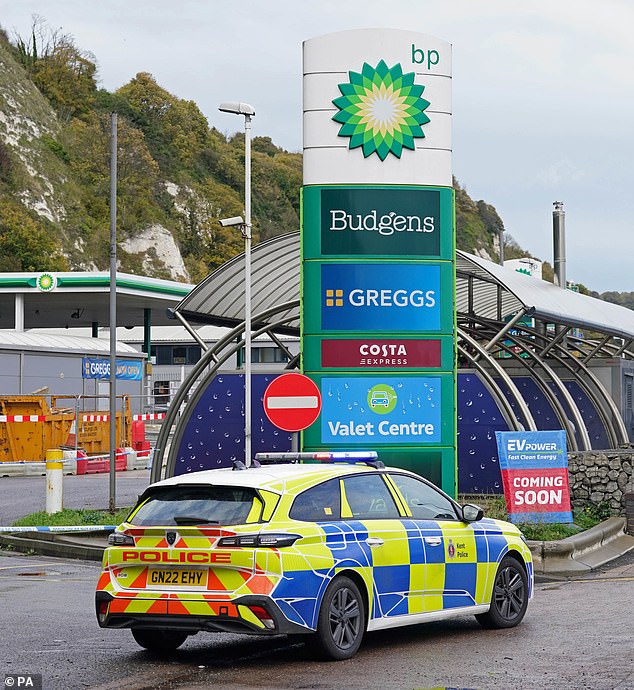
A recent report estimated that some £6.5million in fuel has been stolen by ‘bilkers’ in Britain in the last five years. And around 13% of instances of petrol and diesel theft is a driver using a car with fake, stolen or duplicated plates
A recent BBC investigation also suggested that the increase in ANPR enforcement has triggered a rise in number plate cloning in the capital.
Based on a freedom of information request sent to all London councils last year, there has been a 64 per cent rise in fines being cancelled over three years linked to offenders using duplicated number plates.
It found the number of cases rose from 22,450 in 2021 to 36,794 in 2023.
Overall fines issued went up by 20 per cent over the same period, with some councils reporting that more than 1.5 per cent of all their traffic fines were linked to cloned vehicles.
It also hinted that the expansion of London’s ULEZ had sparked a rise in cloning instances.
A freedom of information request to Transport for London revealed a 69 per cent rise in ULEZ fines being cancelled due to cloning in the five months following the zone’s extension in August 2023.
Prof Jonathan Grigg, an expert in paediatric respiratory and environmental medicine at Queen Mary University of London, told the BBC he believes there is a ‘clear link’ between the ULEZ expansion and the figures obtained by the BBC.
‘It likely that the introduction of ULEZ has increased the number of cloning activities across London. One would imagine that people are trying to avoid paying the ULEZ charges by cloning their plates,’ he said.
According to the RAC Foundation, approximately one in 12 number plates is either obscured or damaged. However, others have reported that around one in 15 could be deliberately modified or altered for evasion purposes.
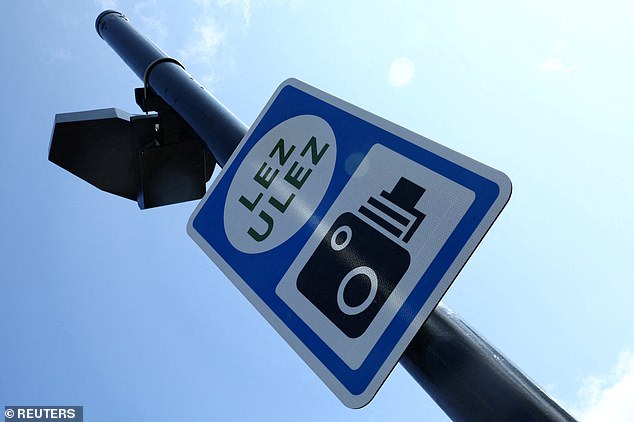
A recent BBC investigation also suggested that the increase in ANPR camera to enforce London’s ULEZ has triggered a rise in number plate cloning instances in the capital
I had my plates cloned – I was being sent speeding fines 18 months later
Lou Calvert, 51, a product manager from Kent, has been a victim of vehicle identity theft.
She was initially alerted to the fact when in 2019 she received a London Congestion Charge penalty letter in the post despite not driving in London on the day of the offence.
She soon began receiving a stream of other London-based penalty notices for parking and other traffic offences.

Lou Calvert, 51, from Kent told us the headache she endured when trying to prove her innocence and avoid fines after someone cloned her car’s number plates in 2019
‘In total there were 10 penalty notices of some description across a number of different boroughs of London – some were for parking fines not paid, others for driving offences, for example driving in a bus lane or parking in residents parking.’
Lou said she contacted the police, DVLA and issuing authorities to submit her evidence to have all the charges withdrawn.
She told the Daily Mail this was a laborious task, having to provide evidence to each London borough separately.
‘Initially the notices didn’t have any photos included of the other car and so I had to prove that I couldn’t have been in the place that these were taking place.
‘I was told I was not able to use data from my work pass to show that I was in a different location at the time. So, I asked my manager to write a letter to confirm that I’d been in the office and therefore wasn’t in the area where the offences were taking place.
‘I also provided train ticket purchases to show that I wouldn’t have been driving at the time.
‘And then some of the charges started to include photos of the other car, which although it was the same make, model and colour as mine, I started to spot some small differences to my car.
‘I created an evidence pack based on these photos to show the differences between the two cars.’
After dealing with the initial fines, Lou said letters stopped. As such, she opted not to endure another logistical nightmare getting her number plates changed, assuming the offender had been caught or changed their plates again to avoid detection.
‘However, 18 months later, I received a notice of prosecution from West Yorkshire police for speeding.
‘Again, I had to provide evidence that it wasn’t my car and so that was cancelled.
‘I was advised that the details of my vehicle registration number may be circulated on police computer databases, and I didn’t receive any other charges after that.
‘I still don’t know whether the offender was caught.’













